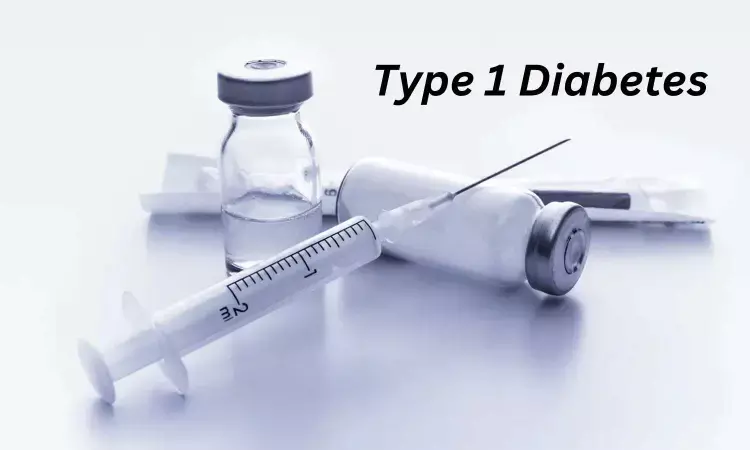- Home
- Medical news & Guidelines
- Anesthesiology
- Cardiology and CTVS
- Critical Care
- Dentistry
- Dermatology
- Diabetes and Endocrinology
- ENT
- Gastroenterology
- Medicine
- Nephrology
- Neurology
- Obstretics-Gynaecology
- Oncology
- Ophthalmology
- Orthopaedics
- Pediatrics-Neonatology
- Psychiatry
- Pulmonology
- Radiology
- Surgery
- Urology
- Laboratory Medicine
- Diet
- Nursing
- Paramedical
- Physiotherapy
- Health news
- Fact Check
- Bone Health Fact Check
- Brain Health Fact Check
- Cancer Related Fact Check
- Child Care Fact Check
- Dental and oral health fact check
- Diabetes and metabolic health fact check
- Diet and Nutrition Fact Check
- Eye and ENT Care Fact Check
- Fitness fact check
- Gut health fact check
- Heart health fact check
- Kidney health fact check
- Medical education fact check
- Men's health fact check
- Respiratory fact check
- Skin and hair care fact check
- Vaccine and Immunization fact check
- Women's health fact check
- AYUSH
- State News
- Andaman and Nicobar Islands
- Andhra Pradesh
- Arunachal Pradesh
- Assam
- Bihar
- Chandigarh
- Chattisgarh
- Dadra and Nagar Haveli
- Daman and Diu
- Delhi
- Goa
- Gujarat
- Haryana
- Himachal Pradesh
- Jammu & Kashmir
- Jharkhand
- Karnataka
- Kerala
- Ladakh
- Lakshadweep
- Madhya Pradesh
- Maharashtra
- Manipur
- Meghalaya
- Mizoram
- Nagaland
- Odisha
- Puducherry
- Punjab
- Rajasthan
- Sikkim
- Tamil Nadu
- Telangana
- Tripura
- Uttar Pradesh
- Uttrakhand
- West Bengal
- Medical Education
- Industry
COVID-19 infection in children may increase T1D risk: JAMA

Since 2020, a COVID-19 diagnosis in children has been linked to an increase in the occurrence of type 1 diabetes in Bavaria, says an article published in the Journal of American Medical Association.
During the COVID-19 pandemic, the prevalence of type 1 diabetes in children rose, although studies did not differentiate between children with and without infection. Andreas Weiss and colleagues examined an extensive population-based, individual-patient data set which included COVID-19 diagnoses to see if there was a temporal connection between COVID-19 and type 1 diabetes in children.
The Bavarian Association of Statutory Health Insurance Physicians (BASHIP) handles claims for all statutorily insured patients in Bavaria, Germany (around 85% of the entire Bavarian population). This research used anonymized data from all infants born between 2010 and 2018 and monitored in the BASHIP database through December 2021. Medically attended COVID-19 and type 1 diabetes diagnoses were reported in quarterly (3-month) calendar intervals with no information on the precise date of diagnosis. Clinicians input illness codes indicating if COVID-19 was viral confirmed (polymerase chain reaction positive) for COVID-19.
The prevalence of type 1 diabetes was examined between 2018-2019 and 2020-2021. On a quarterly basis in 2020-2021, time-dependent Cox models adjusted for children's gender and age were used to predict the risk of type 1 diabetes linked with a COVID-19 diagnosis. A sensitivity analysis was undertaken to rule out COVID-19 diagnoses that did not have viral confirmation.
The key findings of this study were:
1. Through December 2019, 1242 of the 1 181 878 children having medical claims data were diagnosed with type 1 diabetes.
2. Between January 2020 and December 2021, 195 795 of the remaining 1 180 636 children without widespread type 1 diabetes at the start of 2020 were diagnosed with COVID-19.
3. COVID-19 first-time diagnoses varied from 0.18% in January to March 2020 to 4.79% in October to December 2021.
4. Boys had a greater frequency than girls, and children less than the median age of 6.5 years had a higher frequency (18.6%) than older children (14.6%).
5. Between January 2020 and December 2021, the incidence rate of type 1 diabetes was 29.9 per 100,000 person-years, compared to 19.5 between January 2018 and December 2019.
6. In the absence of a prior or concurrent COVID-19 diagnosis, the incidence rate of type 1 diabetes during the pandemic was 28.5 per 100,000 person-years.
7. In the same quarter as the COVID-19 diagnosis, the incidence rate of type 1 diabetes was 55.2 per 100 000 person-years.
8. In the next two quarters, the incidence rate was 38.8 and 50.7, respectively.
Reference:
Weiss, A., Donnachie, E., Beyerlein, A., Ziegler, A.-G., & Bonifacio, E. (2023). Type 1 Diabetes Incidence and Risk in Children With a Diagnosis of COVID-19. In JAMA. American Medical Association (AMA). https://doi.org/10.1001/jama.2023.8674
Neuroscience Masters graduate
Jacinthlyn Sylvia, a Neuroscience Master's graduate from Chennai has worked extensively in deciphering the neurobiology of cognition and motor control in aging. She also has spread-out exposure to Neurosurgery from her Bachelor’s. She is currently involved in active Neuro-Oncology research. She is an upcoming neuroscientist with a fiery passion for writing. Her news cover at Medical Dialogues feature recent discoveries and updates from the healthcare and biomedical research fields. She can be reached at editorial@medicaldialogues.in
Dr Kamal Kant Kohli-MBBS, DTCD- a chest specialist with more than 30 years of practice and a flair for writing clinical articles, Dr Kamal Kant Kohli joined Medical Dialogues as a Chief Editor of Medical News. Besides writing articles, as an editor, he proofreads and verifies all the medical content published on Medical Dialogues including those coming from journals, studies,medical conferences,guidelines etc. Email: drkohli@medicaldialogues.in. Contact no. 011-43720751


